Cycling back in time to Shiwa and Lwitikila, Zambia
After our brief detour to Dar es Salaam for some well-needed r&r, we headed back to Mbeya. From there, we cycled the short distance to Utengule Coffee Lodge, where we met up with Tom and Eva, whom we’d first met in the Lower Omo Valley in Ethiopia. They’d been stuck at the lodge for a week awaiting parts for their poorly Unimog, and it was lovely to see them once again.
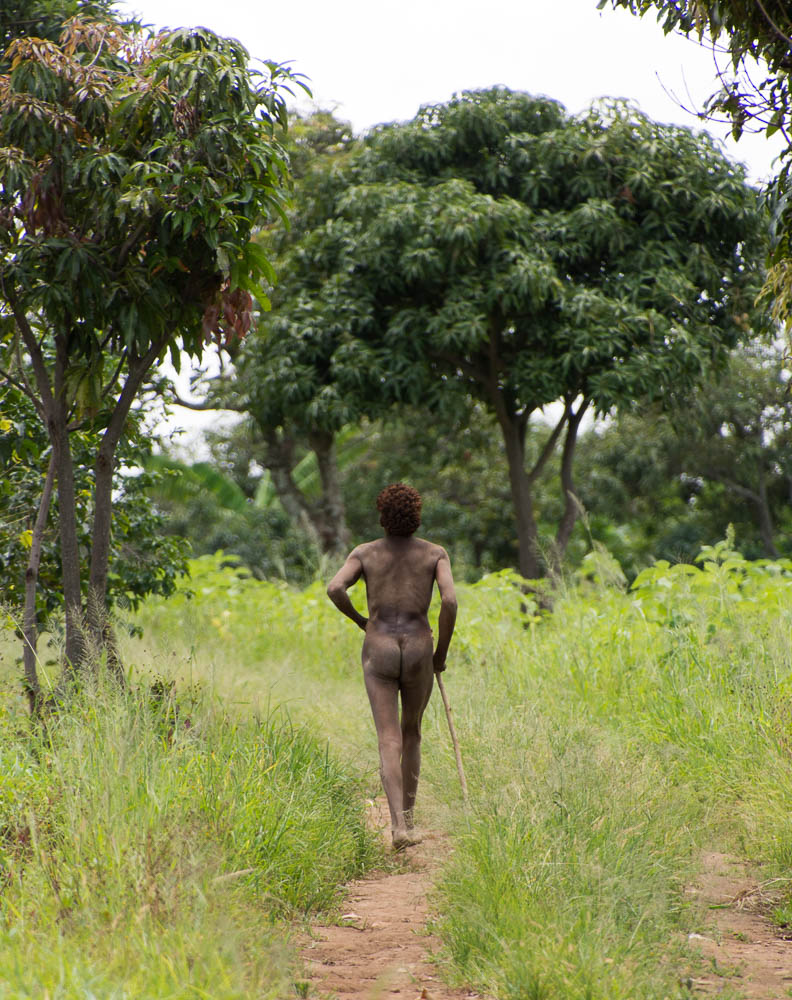
We took a walk in the hills above the Utengule Coffee Lodge and came across this chap who was also out for a walk…
The next day, we were heading in the same direction, so they loaded our panniers into their vehicle whilst we cycled kit-free for the first time since we left home. Unburdened of the 40-50kg panniers we’re each carrying was liberating, and, as we crossed the border into Zambia, we were figuratively flying at an average 20kmph as opposed to our usual 10-15kmph.
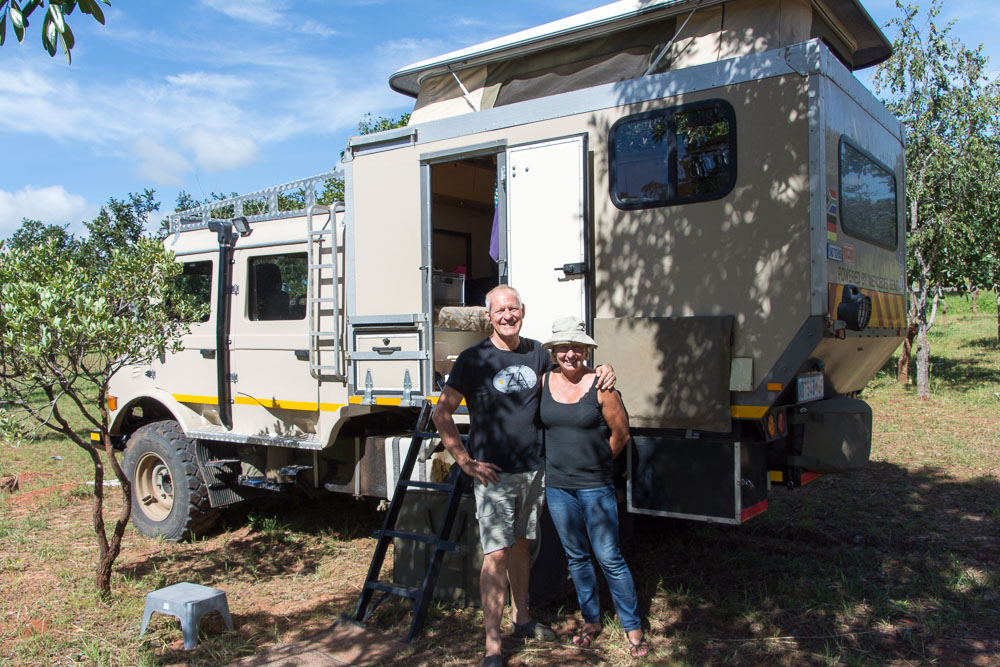
We were delighted to meet up again with Tom and Eva but sad to hear that they were having problems with their Unimog
We met up with Tom and Eva later that day at a small lodge in Isoka, where they greeted us with a delicious home-cooked meal and another evening in great company. It’s a shame that they were heading home to Johannesburg and couldn’t follow us all the way to Cape Town! After a decent night’s sleep in our tent, we headed south to Shiwa Ng’andu, a place that’s very special to my family.
Shiwa Ngandu
Deep in the northeastern Zambia bush lies the crazy creation of a British imperialist who wanted to ‘live like an Emperor’ – a Home Counties estate in the heart of Africa.
Shiwa Ngandu was the dream of an English army officer called Sir Stewart Gore Browne, who went to Africa in 1911 as part of the Anglo-Belgian commission to draw up the border between Northern Rhodesia and the Belgian Congo. Whilst at Harrow, and, at the age of 16, he drew a detailed plan in his diary under the heading “House to be built at some future date for S. Gore Browne Esq”, showing a 12-bedroom estate with sweeping entrance, tower, billiards room, library, smoking room, long hall-cum-ballroom and servants’ quarters.
Although his family was relatively well off, he realised his income would “make little impact” in England, but he could “live like an Emperor” in Africa and set off to find the perfect place.
In 1914, Gore Browne arrived at Lake Shiwa. In his diary, he wrote: “It was all so magical that I felt I had entered a fairy kingdom.” Although he’d chosen the spot, war broke out, so it wasn’t until 1920 before he returned to Africa to begin the monumental job of building Shiwa.
The resultant manor house, red-brick outbuildings, gatehouse with clock tower and walled rose gardens would more likely be found in Surrey or Hertfordshire rather than a 13-hour drive north from Lusaka.
Gore Browne struggled to make the farm a success. In fact, it only made money for three years. One of his many different ventures was to make low volume, high-value products such as essential oils but, over time, he relied on frequent bailouts from his wealthy aunt back in the UK to keep his African dream alive.
In the 1960s, Gore Browne handed over the running of the estate to his daughter Lorna and her husband, Major John Harvey. At this time, whilst working as teachers at a nearby school, my parents met John and Lorna and were regular guests at Shiwa. To this day, they have very fond memories of their times there.
In 1992, Michael Palin stopped by at Shiwa on his Pole to Pole adventure. But, tragically, just 6 months after his visit, both John and Lorna were killed by gunmen at their other farm in Chisanga near Lusaka.
After their deaths, the house was left vacant and fell into disrepair. That was until 1999 when their eldest son, Charlie, took it over and, together with his wife Jo, they set about the monumental task of restoring the house and turning the vast grounds into a fully-functioning farm once more.
For me, it’s been a lifelong dream to visit a place that has been talked about for so long in our family. Therefore it was an honour to be invited by Charlie and Jo to stay on the estate for a few days.
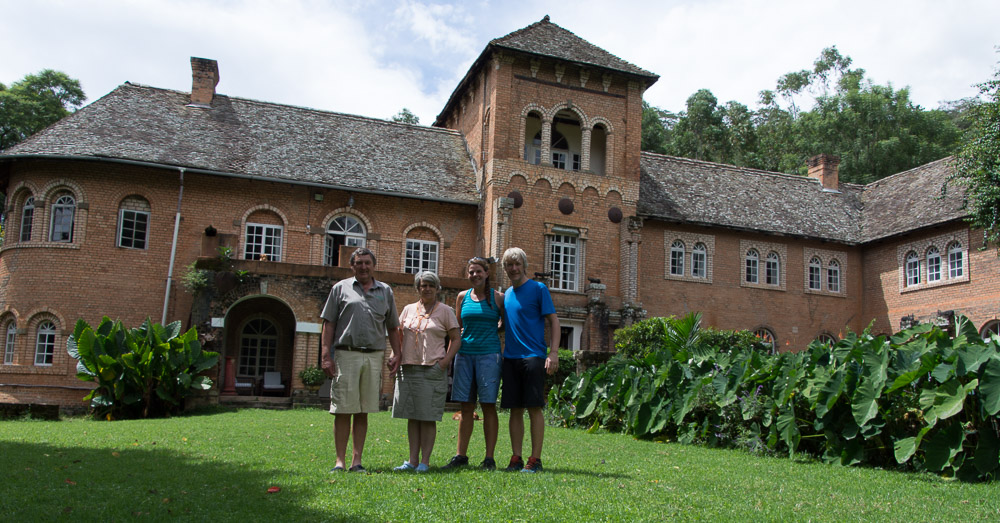
We were honoured to be guests of Charlie and Jo Harvey at Shiwa
The main house has now been restored (although it’s a never-ending task for the couple to keep such a building intact) and, at over $400 per person per night, it’s the preserve of the wealthy that either come to soak up the history or join Charlie on safari or hunting trips. We stayed in a small cottage 5km from the main house, an outbuilding of the larger house named ‘Impandala’, built in 1930 for missionaries.
There, Tink Robey, a retired vet, and his wife Jen greeted us, and they were incredibly kind by inviting two hungry cyclists to dine with them at Impandala – especially as their nearest grocery store is a 250km round trip!
Whilst driving across the estate, Tink pointed out some of the many varieties of mammals that roam Shiwa, including Impala, Elands, Zebra and Lechwe. However, he lambasted me each time I (innocently) called something a “deer”!
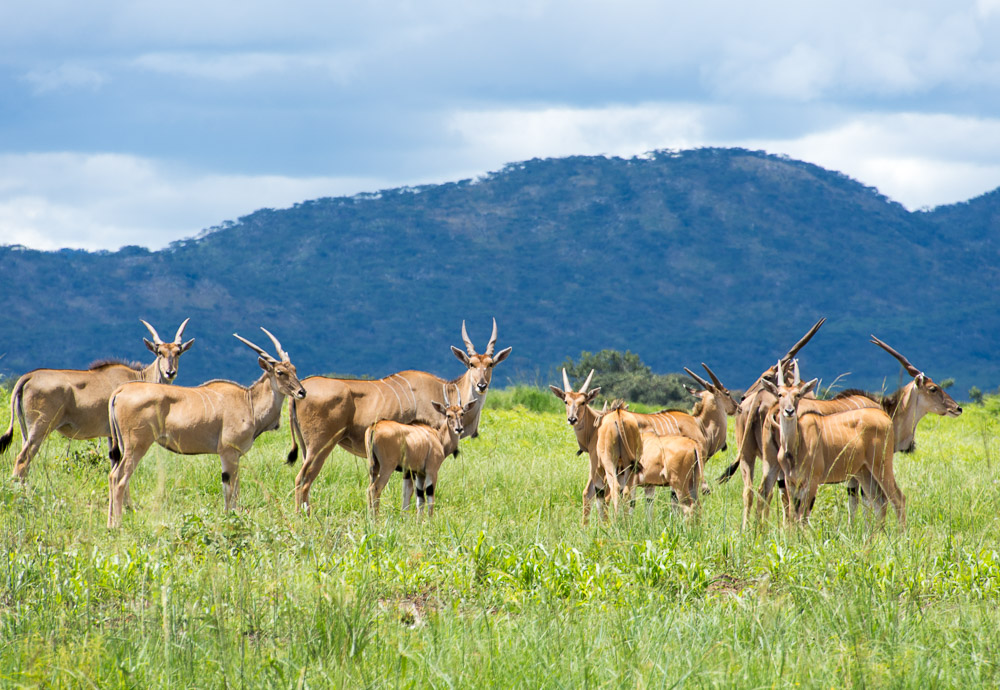
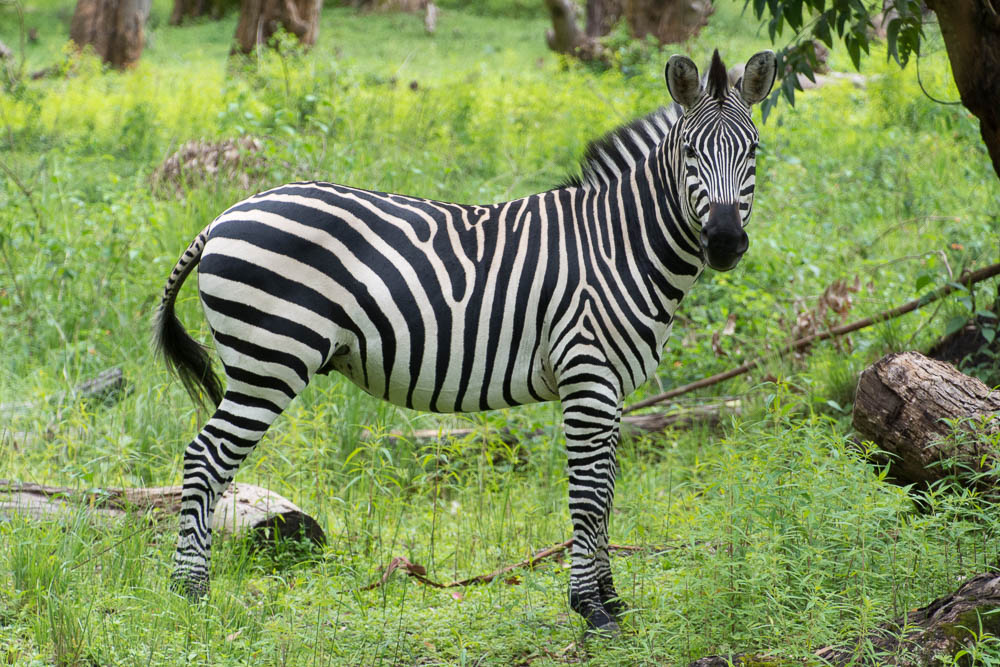
To this day, it’s a gargantuan task to run an estate like Shiwa. Charlie has had to diversify as much as possible, grows several different crops, and breeds chickens, pigs, and cattle. The sheer distance from market and the fact that business loans are in dollars, but income from agriculture is in Kwacha (which has recently devalued) makes running the farm tough. Poaching’s also a problem, and we joined Tink as he led one of the regular ‘cattle counts’.
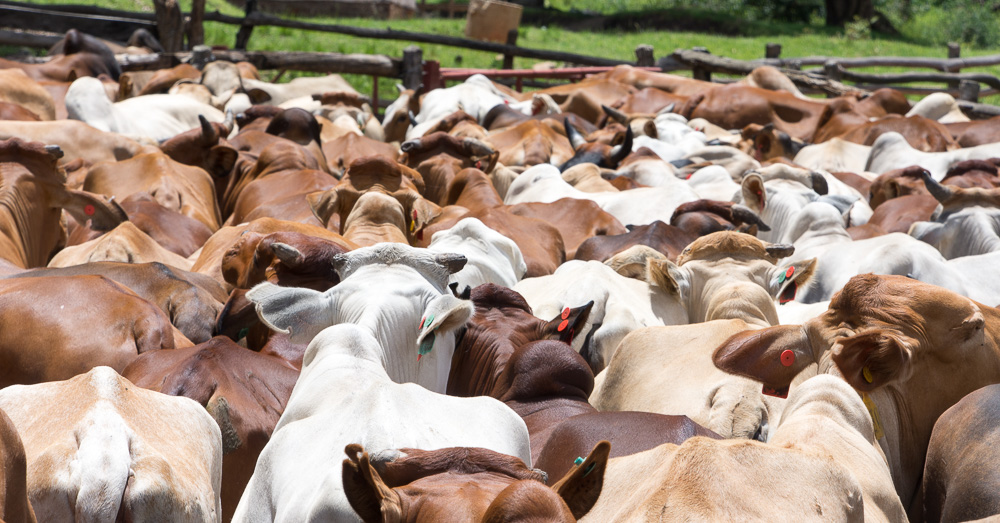
We joined the team for one of the regular cattle counts
The name, Shiwa Ng’andu, means ‘Lake of the Royal Crocodiles’. A name that is as ever relevant because, just a few days before our arrival, three of the Harvey’s dogs were taken by a croc in one of the estate’s streams.

Three of the Harvey’s dogs were taken by a croc in one of the estate’s streams just before we arrived. Here’s Emily making friends with the remaining ridgebacks.
We took a day to cycle 25km to Kapishya Hot Springs, at the far side of the estate, where we met Charlie’s younger brother, Mark. We soaked in the springs, the deliciously warm water bubbling up from the sands below. My parents wouldn’t recognise the surroundings; Mark runs a successful luxury lodge, restaurant and camping grounds at the springs, and they get over 6,000 visitors a year.

Taking a soak at the Kapishya Hot Springs on the Shiwa estate
It was an honour to join Charlie, Jo, and other guests (including Chris Barker, who was visiting on business) for dinner that night in Shiwa’s grand dining room. The feast of slow-cooked beef, followed by homemade fruit crumble and ice cream, was heaven to the taste buds of two touring cyclists.
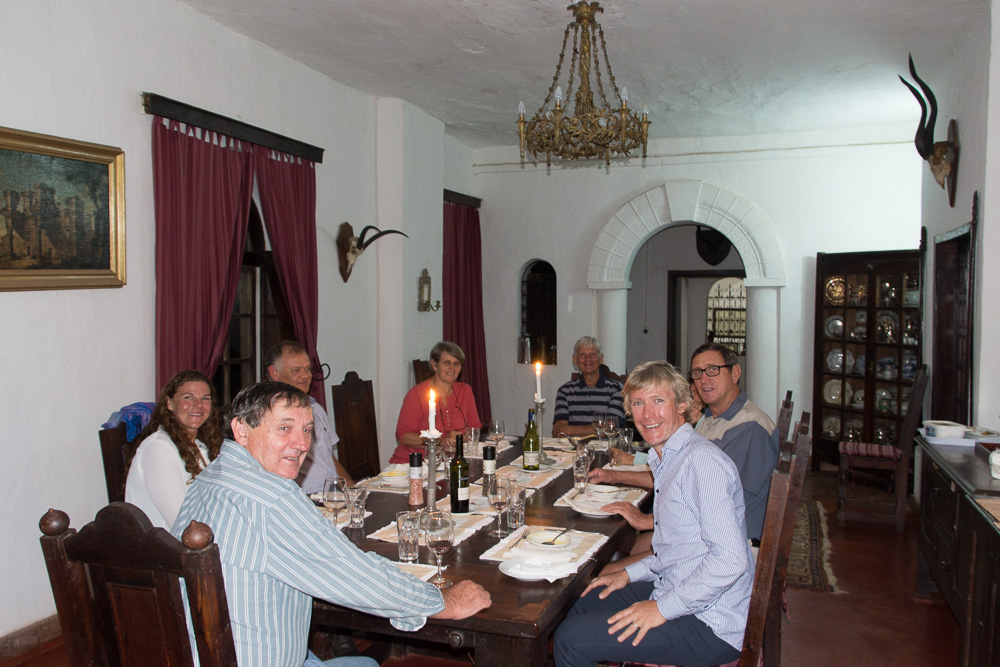
Dining with he Harveys in the main dining room at Shiwa
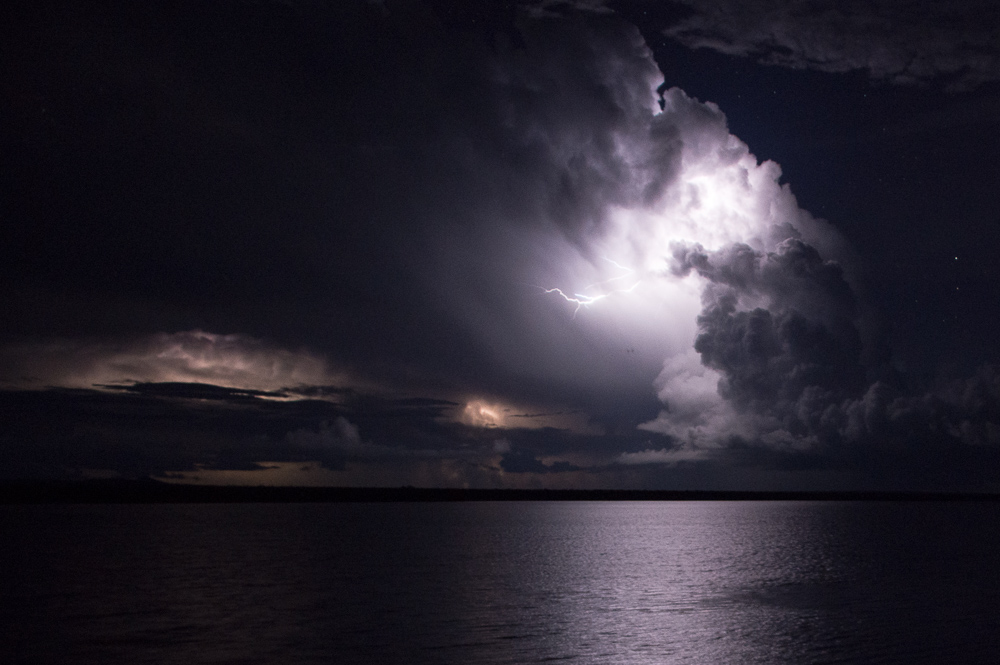
A spectacular lightning storm lit the night sky over Shiwa
The next day, Jo showed us into the library and pulled out old visitors’ books. Leafing through, I found my parents’ signatures on a number of occasions, one of which was the day of Gore Browne’s funeral in 1967. I even found an entry in Gore Browne’s diary that mentioned one of my parents’ visits.
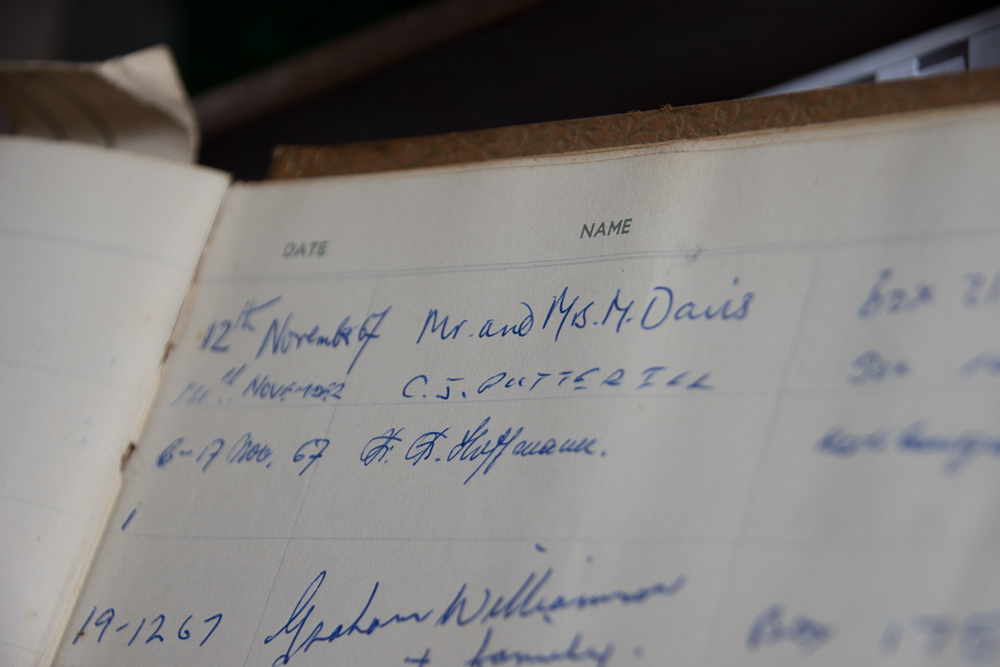
Finding one of my parents’ entires in the Shiwa visitors book from 1967
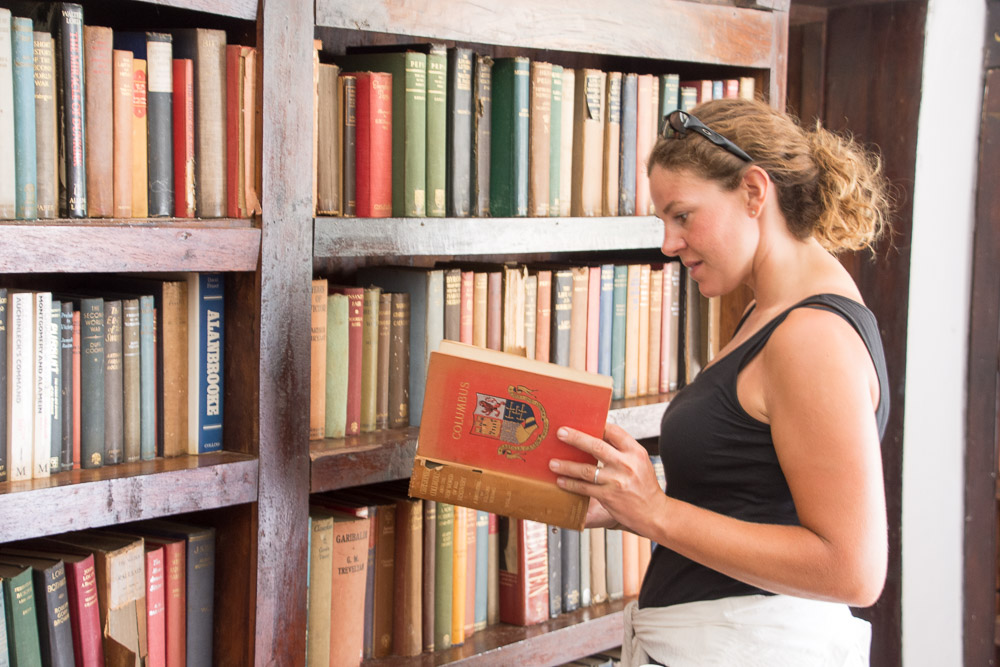
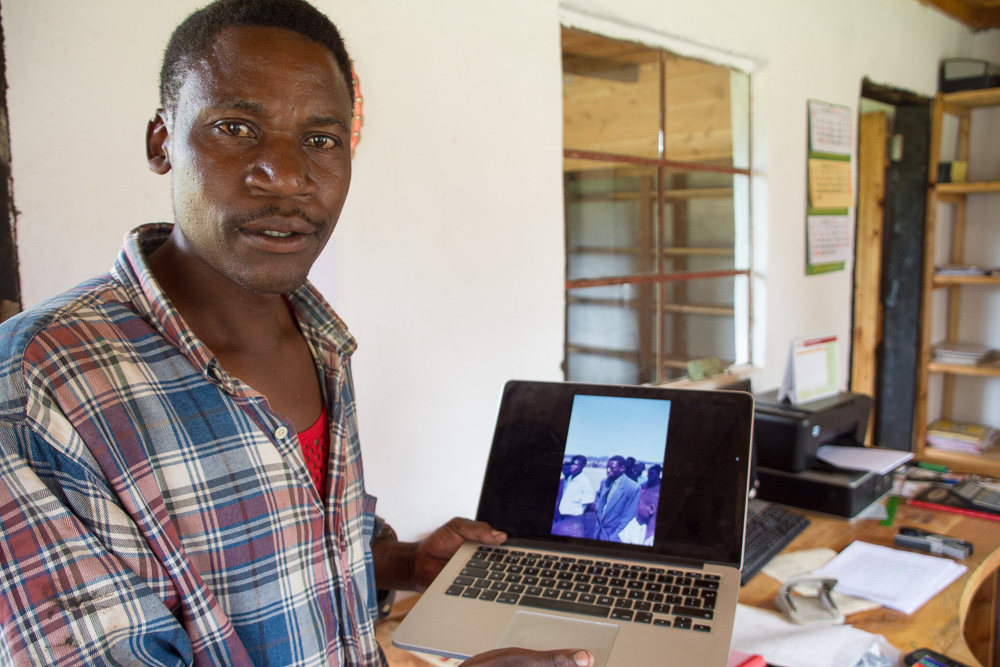
This chap was delighted to see his dad in one of my parents’ old photos…but, for a while, he actually thought he was looking at an image of himself. Although unwell, we were pleased to learn his dad’s still alive.
The history of Shiwa is described (or, perhaps romanticised) in The Africa House, by Christina Lamb. There’s also an associated documentary; The Curse of the Africa House.
Lwitikila
After leaving Shiwa, we cycled 90km south along the Great North Road. There, we stopped at Lwitikila Girls’ School, where my parents taught between 1965 and 1968.
We camped at the nearby waterfalls and walked around the school to see the sports field that my dad helped build. We even found the house where they both lived. It’s now occupied by the deputy head, Mwila Martin, who invited us inside.
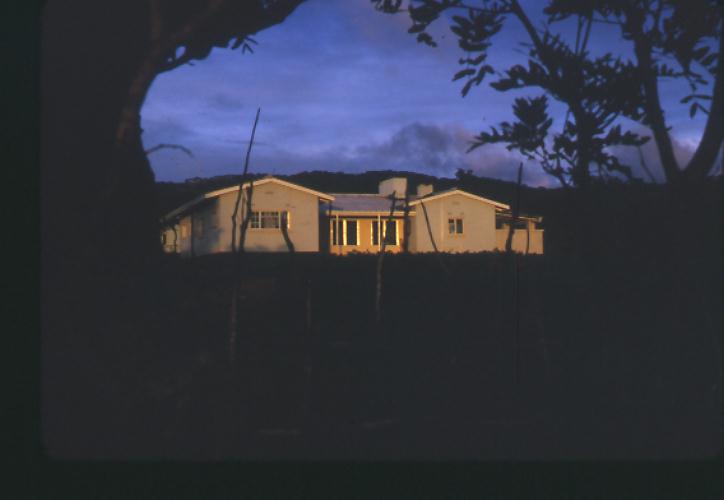
The rear of my parents’ house in 1965

The rear of the same house in 2016
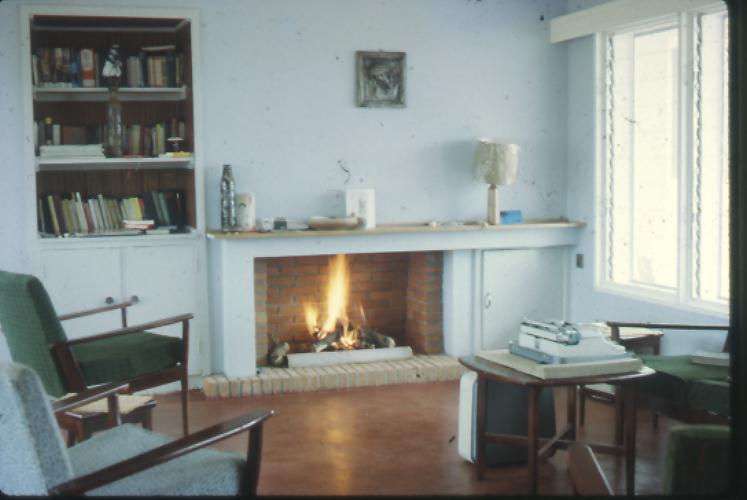
My parents’ living room in the 1960s
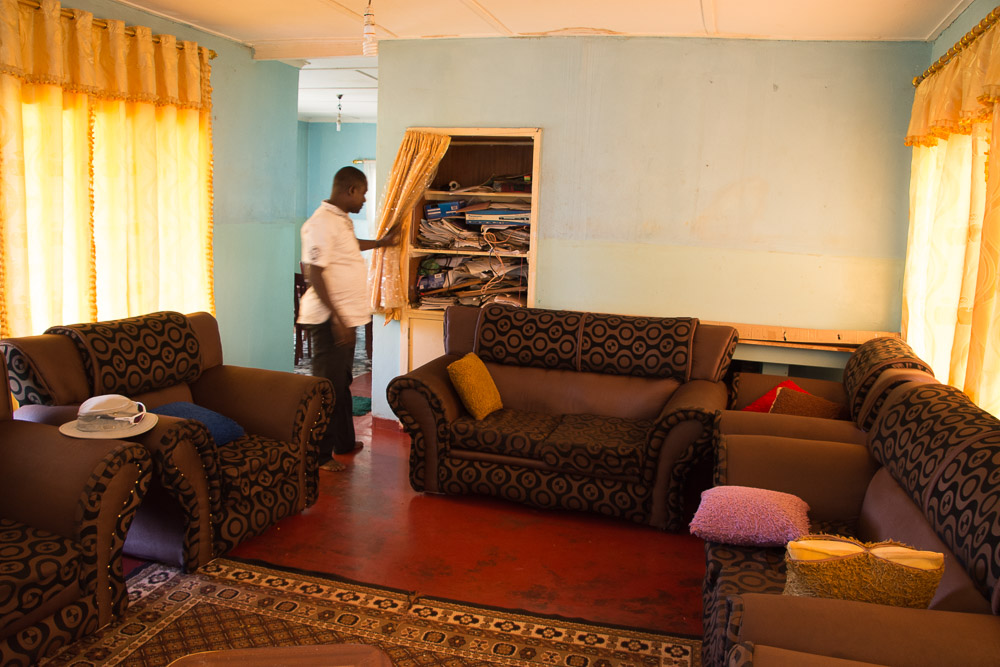
The same living room in 2016
The next day, he gave us a school tour and introduced us to a few of the classes. Today, Lwitikila Girls’ School is one of the top schools in Zambia, and my parents would be proud that it’s such a high-performing school.
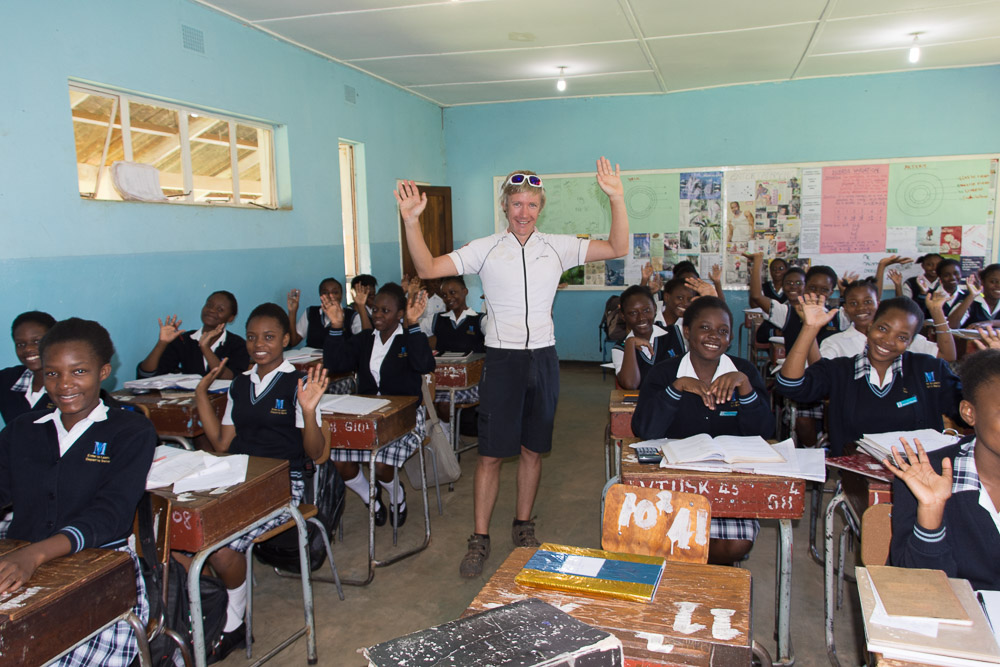
Meeting the kids at Lwitikila girls school – where my parents taught 50 years ago!

The school clinic
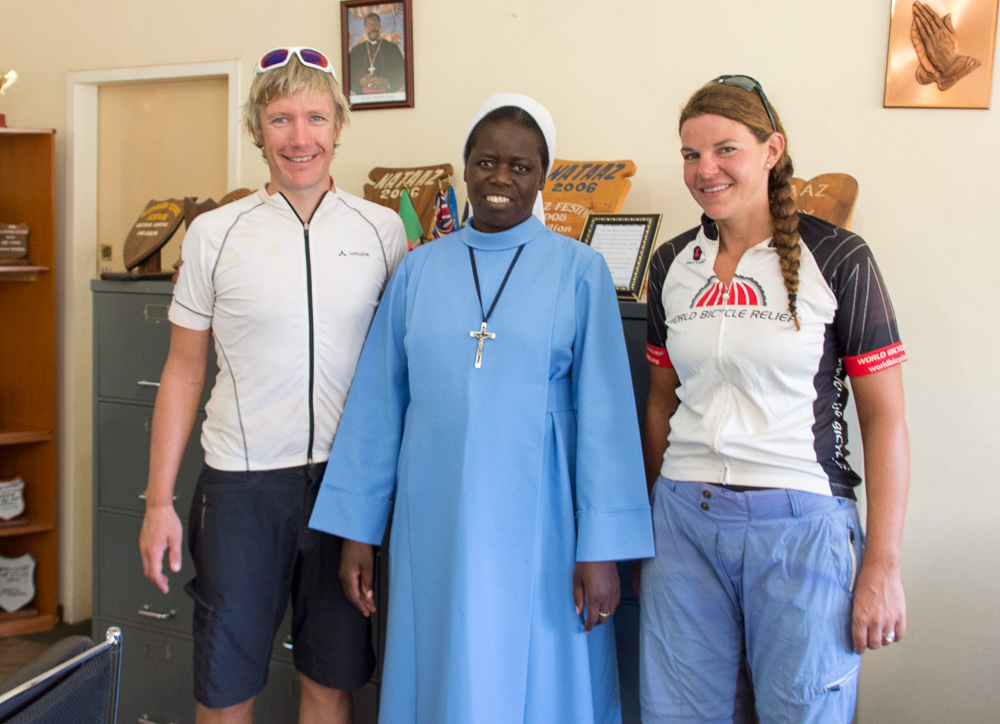
Meeting the head teacher at Lwitikila Girls School, Sr Clementina
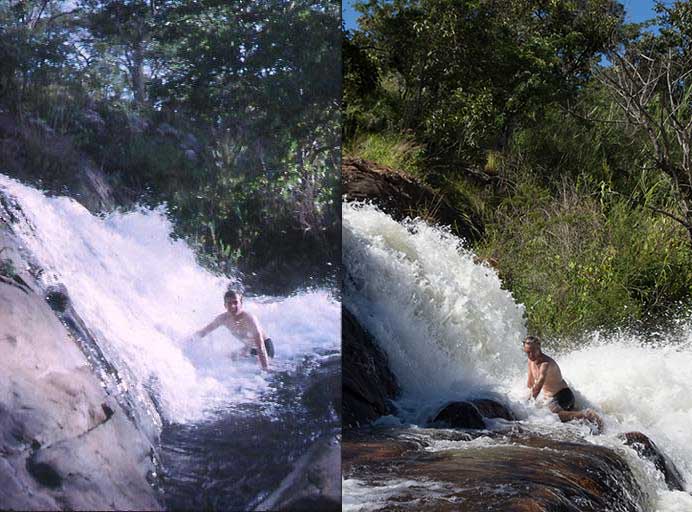
Dad left in 1966. Me right in 2016.
We explained to the kids the purpose of our trip, and it was great that they’d all heard of World Bicycle Relief’s Buffalo Bikes. In fact, we’ve seen many of the Buffalo Bikes on the streets of Zambia, ridden by kids so that they can get to school and get an education. Through our fundraising efforts, we hope that we can make education accessible to more and more children throughout rural Africa.
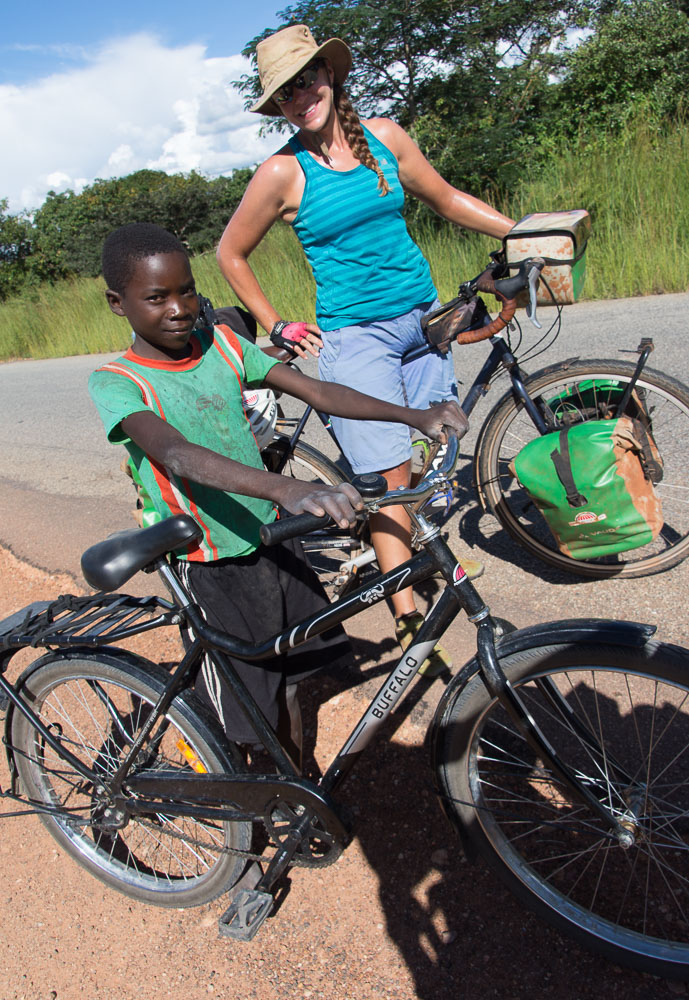
We’ve seen many of World Bicycle Relief’s Buffalo bikes on the streets of Zambia; helping kids like this get to school!
We cycled south from Lwitikila, stopping briefly outside Chilonga hospital, where my eldest brother, Francis, was born 49 years ago. It was no real surprise that there wasn’t a statue or blue plaque in his honour (just yet), so, after a quick loo stop in his honour, we continued on our journey south.
The people of Zambia have been incredibly warm and friendly. The kids shout “How are you?” from the sidelines, and other road users we’ve passed have all shouted friendly greetings. One minor observation, though, is that when you say “hello” to somebody, they’ll reply with “I’m fine”. Much like Ethiopia’s “Where are you go?” It’s another small conversational error that starts to niggle when you hear it a thousand times a day. Still, at least the never-ending East African shouts of “Muzungu!” have disappeared.
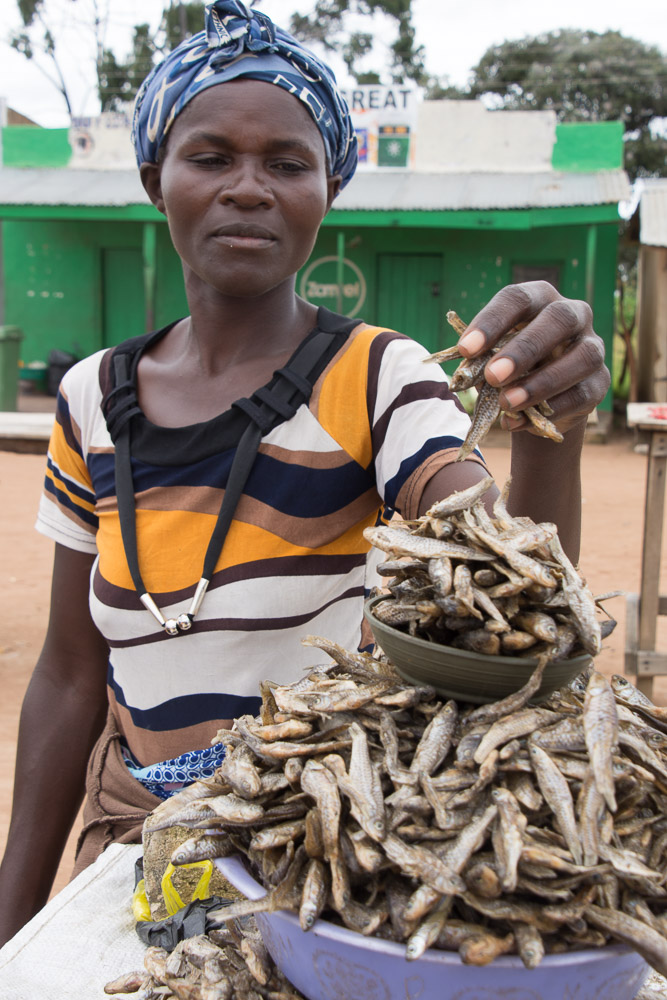
The local staple of dried fish. They stink!
We’ve been pleasantly surprised by the Great North Road so far. The Tarmac’s good, the traffic is light; it predominantly consists of petrol tankers that pass by in convoy, meaning we can relax and get the kilometres done rather than worry too much about what’s coming up behind.
Zambia is a beautiful country, and it would have been a shame to just cycle through without venturing off the path to see more of the countryside.
So, we turned off the main road, struggled for over 3 hours to travel just 25km along a sandy track and made it to the Muntinando Wilderness Lodge. Our effort was definitely worth it as we’ve been rewarded with beautiful tranquillity, camping with views across to the South Luangwa National Park. Muntinondo Wilderness combines 10,000 hectares of pristine miombo woodland and has over 1,000 different plant species and 324 species of bird.
It’s a great place to explore by foot with over 50km of maintained and signposted tracks. We decided to do just that, but our attempt at a walk in the countryside was cut short when the heavens opened, and we got thoroughly drenched. We had planned to hike to the top of a nearby hill but, with a spectacular lightning show filling the sky, we thought it unwise to be perched on top of a granite mountain.
Instead, we headed to the nearby Chiso falls to relax the leg muscles. That said, it was slightly less relaxing for Emily. She’d volunteered to swim 300m upriver to help one of the local guys retrieve a welly boot he’d lost in the river earlier that day. The “300 meters” turned into a 1km round trip in the river, so she definitely earned her hot shower and a good meal!
If you’re ever passing through Northern Zambia, this place is an incredibly peaceful escape from reality.
We’re now back on the road and hope to cover 600km, so we arrive in Lusaka for Easter.
If you’ve enjoyed reading this blog post, please donate to World Bicycle Relief. Every penny goes to the great work the charity does in Africa – not to fund our expedition in any way.

